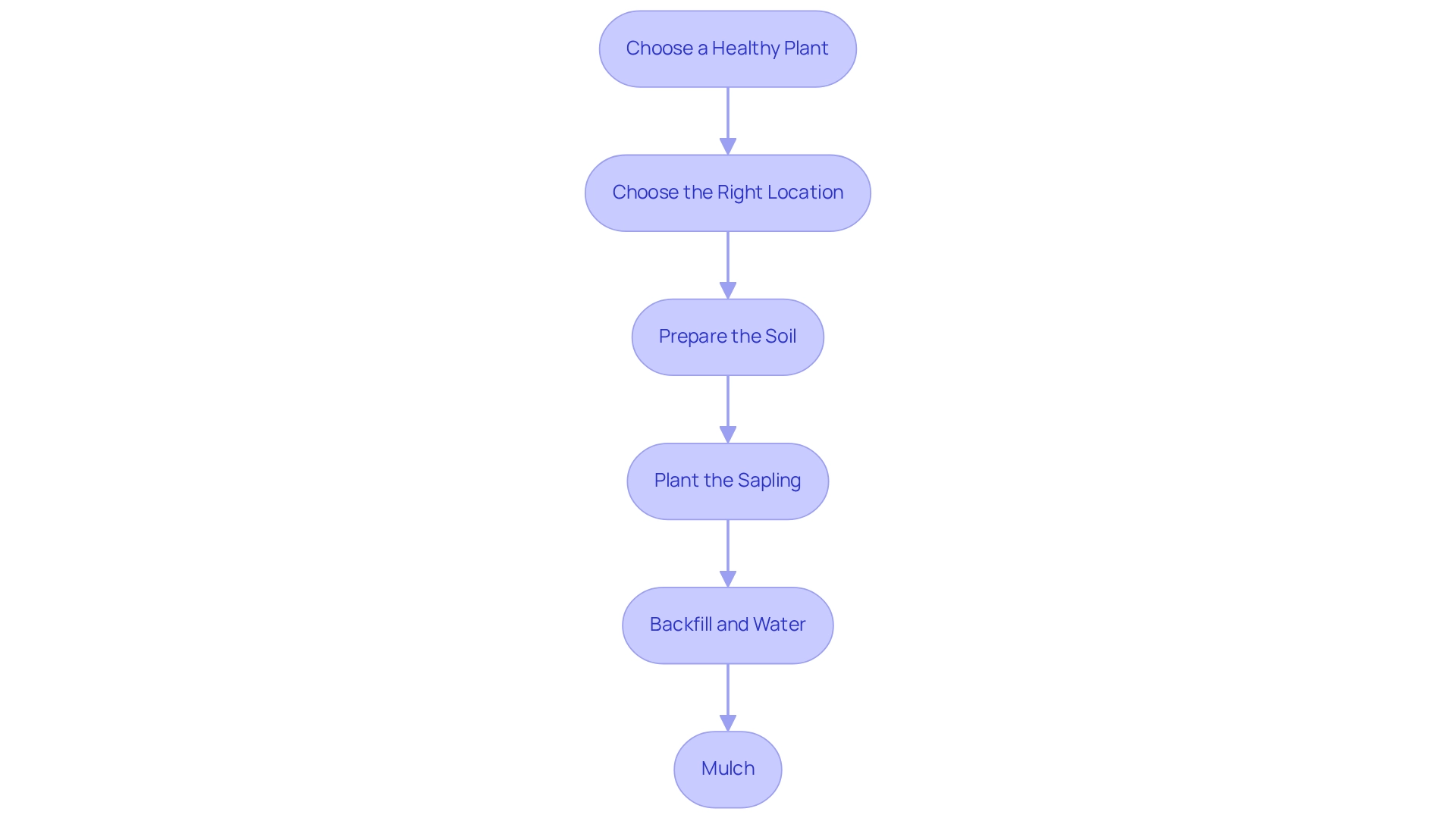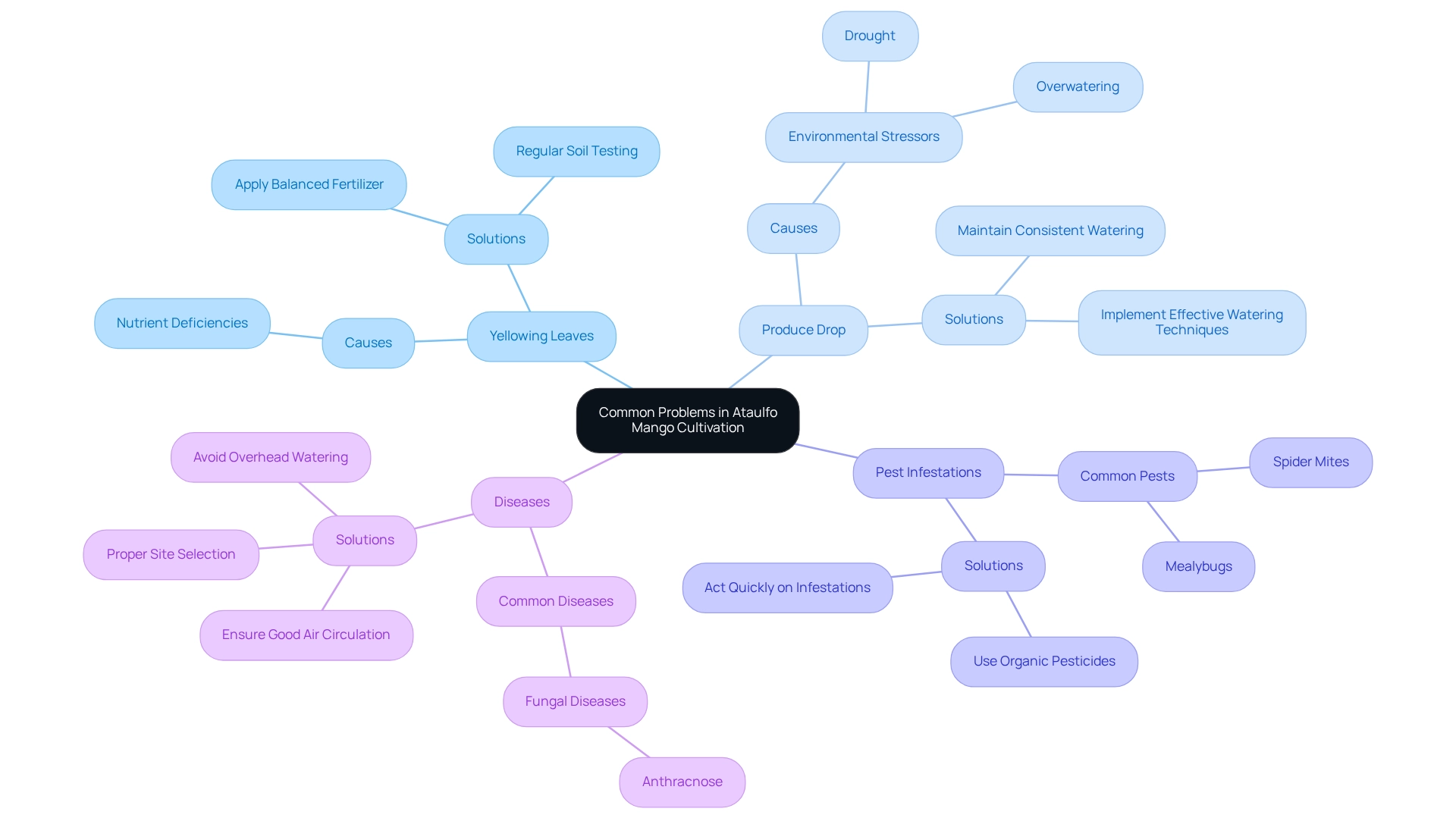
Master the Ataulfo Mango Tree: Step-by-Step Planting Guide & Care
Share
Craving Homegrown, Ultra-Sweet Mangoes?
Ataulfo mango trees are your golden ticket to a lush, tropical backyard filled with creamy, fiberless fruit. Known for their compact size and velvety flavor, these mangoes are a favorite among home gardeners in warm climates.
Shop Ataulfo Mango Tree, Grafted at Everglades Farm
At Everglades Farm, you’ll find expertly grafted Ataulfo mango trees—ready to thrive in your garden. Add this tropical gem to your landscape and explore our full Mango Trees Collection and Grafted Mango Trees for more varieties.
- The need for sunlight
- Suitable soil types
- Proper watering practices
Introduction
1. Understand the Growing Requirements for Ataulfo Mango Trees

2. Follow Step-by-Step Instructions for Planting Your Ataulfo Mango Tree
-
Choose a healthy plant: Begin your gardening journey by selecting a grafted ataulfo mango tree from a reputable nursery, like Everglades Farm. Grafted plants are celebrated for their remarkable growth and fruit yield, making them a wise choice for any gardener eager to cultivate success.
-
Choose the Right Location: Next, find a sunny spot in your garden that basks in at least 8 hours of sunlight each day. Choosing the right location is essential, as the ataulfo mango tree flourishes in full sun and requires well-drained areas to avoid flooding during heavy rains.
-
Prepare the Soil: To set the stage for your plant's success, enrich the planting area with organic matter. This not only improves drainage but also enhances nutrient availability. Dig a hole that is twice the width of the root ball and the same depth, allowing ample room for roots to expand.
-
Plant the Sapling: With care, remove the sapling from its container, gently loosening any tightly bound roots to encourage healthy growth. Position the plant in the center of the hole, ensuring that the top of the root ball is level with the ground surface for stability.
-
Backfill and Water: Fill the hole with soil, gently tamping it down to eliminate air pockets that can impede root development. Water the plant thoroughly to help compact the soil around the roots, ensuring good contact for optimal growth.
- Mulch: Finally, apply a layer of organic mulch around the base of the plant, keeping it a few inches away from the trunk. This practice retains moisture, controls weeds, and regulates ground temperature, creating a nurturing environment for your fruit plant.
More mango planting tips in Best Mango Tree Care: Soil, Watering, Pruning, and Harvesting

3. Implement Care Techniques for Healthy Growth and Fruit Production
-
To nurture your ataulfo mango tree, deeply water it but do so infrequently, allowing the top few inches of soil to dry out between waterings. During dry spells, aim to water once a week to maintain moisture without over-saturating the roots. This mindful approach helps your plant thrive, ensuring it receives the care it deserves.
-
Fertilization: Apply a balanced fertilizer with an N-P-K ratio of 8-3-9 during the growing season, every 6 to 8 weeks. It’s important to avoid over-fertilizing, as this can lead to excessive leaf growth at the expense of fruit production. Research shows that appropriate nutrient application directly correlates with improved fruit yields, highlighting the importance of a well-planned fertilization schedule. Remember, mango plants prefer nutrient removal in the order of nitrogen (N) > phosphorus (P) > potassium (K) > calcium (Ca) > magnesium (Mg) > sulfur (S).
-
Pruning: Conduct annual trimming to remove dead or crossing branches. This simple act helps shape the plant for better air circulation and sunlight penetration. Not only does this practice encourage healthy growth, but it also enhances fruit production by allowing more light to reach the inner branches, making your gardening efforts even more rewarding.
-
Pest Management: Regularly inspect your plant for pests such as aphids and scale. If infestations occur, consider using organic insecticidal soap or neem oil to manage them effectively. Regular observation and adjustment to evolving circumstances are crucial for thriving ataulfo mango tree cultivation, ensuring your plant remains healthy and fruitful. As noted by M/S Holiday Mango Farms, adapting to changing conditions is essential for effective fruit care.
Read: Why Is My Dwarf Mango Tree Not Fruiting?

4. Troubleshoot Common Problems in Ataulfo Mango Cultivation
-
Yellowing Leaves: If you're noticing yellowing leaves, it may indicate nutrient deficiencies, especially nitrogen. This can significantly impact your tree's health, and you're not alone in facing this issue. To help your trees thrive, consider applying a balanced fertilizer that encourages healthy foliage growth. Regular testing of your soil can also help determine the specific nutrients your plants need, guiding you towards a flourishing garden.
-
Produce Drop: Experiencing excessive produce drop can be frustrating, often stemming from environmental stressors like drought or overwatering. It's essential to maintain consistent watering practices, ensuring the soil stays moist but not overly saturated. For instance, one local orchard saw a remarkable 30% decrease in fruit drop by implementing effective watering techniques. Together, we can work towards retaining those precious crops!
-
Pest Infestations: Keep an eye out for pests such as mealybugs and spider mites, as they can weaken your plants. If you spot any infestations, don’t hesitate to act quickly with organic pesticides. Protecting the health and productivity of your mango plant is crucial, and taking prompt action can make all the difference.
- Diseases: Fungal diseases like anthracnose can appear as unsightly black spots on leaves and fruit, which can be disheartening. To minimize the risk of such diseases, ensure good air circulation around your trees and avoid overhead watering, which can create a humid environment that fosters fungal growth.
Remember, the right site selection is vital for successful mango growth, influencing both air circulation and moisture levels. Together, we can nurture our gardens and overcome these challenges.

Conclusion
🌿 Turn Your Garden into a Mango Paradise
Growing Ataulfo mango trees at home is easier than you think—especially with the right tools and guidance. Everglades Farm has you covered with expert-picked trees, pro care tips, and fast Florida shipping.
Order Your Grafted Ataulfo Mango Tree Now
Let your backyard be your tropical escape!
🔗 More Mango Resources:



